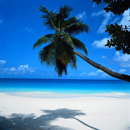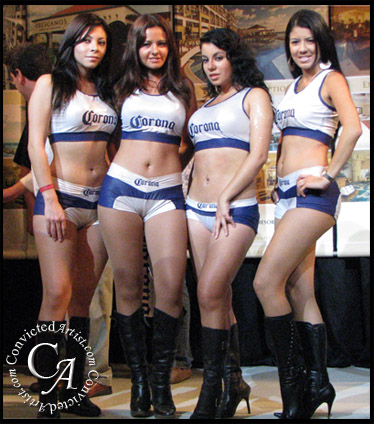History of Cancun Mexico

Although the ruins scattered throughout the area tell of an ancient Mayan civilization across the region, Cancun itself was only developed as a resort island in the 1960s from what was once a sliver of sand off the coast of the Yucatan peninsula. Recognizing a rising outburst of tourism from the US, the Mexican Government carved Cancun out of the deep jungle of the Quintana Roo region, building causeways to connect the island to the mainland and constructing an international airport. Throughout the 1960s and early 1970s, the island was carefully developed with hotels, resorts, restaurants and gardens until it was opened to tourism in 1974. Advertised as a tropical paradise, Cancun soon attracted tourists from Canada, the US and Europe.
More recently, Cancun has been the site of interesting turns in history as the host of the 2003 World Trade Organization talks. The grand scale protests surrounding the talks and the refusal on the parts of multiple developing nations to sign the agreement aroused much controversy.
In October of 2005, Hurricane Wilma made landfall on Cancun as a category 4 hurricane, causing at least three deaths and multiple disappearances, as well as millions of dollars of damages to homes and businesses. However, thanks to an exhaustive public campaign and vigorous restoration efforts, much of the tourist industry has been recovered. Rebuilding is ongoing, but already many of Cancun’s major attractions are up and running again.
The far East of the Peninsula of Yucatán, to the South of the Mexican Republic is surrounded by the Caribbean sea and is known as the Mayan Coast, given this pre-Hispanic civilisation's influence all across the area, from Punta Brava to Punta Allen. The north side of the coast boasts an amazing tourist infrastructure and impressive development.
The south, on the other hand, is home to many different small picturesque villages surrounded by unspoilt beaches, where the Gran Arrecife Maya is to be found, the second largest reef in the world. The south is famous for its forest, with exotic vegetation and great variety of animal species. It is also famous for its underground rivers, caves and deep-sea caverns.
The civilisation which originally inhabited this peninsula was the Mayan civilisation, very advanced as regards the sciences of the Earth and skies, famous for the precision of their calculations and the complexity of their religious rites. In the post-classical period, from the year 1,000 to approximately the year 1,500, the peninsula was an important commercial and religious centre. Tulum was then a fortress on the Caribbean shores. Playa del Carmen was then known as Xaman-Ha, and what is now Xcaret was known as Puerto Pole. The most important city was Cobá, with a population of 50,000 inhabitants.
With the arrival of the Spaniards in 1519, the main Mayan cities, such as Chichen Itza and Uxmal had already been abandoned, what with the wars and conquests of other peoples, the harsh climate and the dangers of the forest, together with the frequent threat of hurricanes, which had caused the civilisation almost to disappear. Xel-Ha went down in history as the first European settlement. However, during the Colonial period the growth of the population was not made easy, given the proximity of the open sea and the pirate attacks. These attacks made it difficult to reach the land, and even when that obstacle was overcome, the forest posed many more difficulties and dangers. This is the main reason why the peninsula was unknown for so long.
In 1967 the Mexican Government recognised the importance of the tourist industry as an active ingredient of the country's economy, and Cancun was one of the places to become a firm candidate for foreign investment and the development of a hotel and entertainment infrastructure, given that its natural beauty was an obvious temptation for any traveller. The first hotels that were built in the 70s were the Palacio Maya and Club Med, both of which developed a great reputation.
Cancun is still an important tourist destination today, and up until the 90s many new hotels were built, as well as American-style shopping malls and all the entertainment facilities it now has to offer.
Cancun is now divided into three areas: Ciudad de Cancun, with a population of 300,000 and a simple and straightforward infrastructure; the ecological reserve, with its incredible lakes, forests and mangrove marshland, and the Zona Hotelera, an island where most of the hotels and shopping malls are to be found. There are two new projects under development, including a tourist sea resort called Puerto Cancun and another project known as Malec�n Cancun, covering some 170 acres of land.
Cancun has more than 25,000 hotel rooms to offer, 200 restaurants and several hundred shops. There are roads leading to the forest, making it easy to get to in most cases.
Cancun has many different faces which come together to offer the natural beauty of what is truly a Caribbean paradise, the forest, and the comfort of five star, Gran Turismo and Categoría especial hotels, all in the setting of what was one of the most advanced and intelligent civilisations in the old world.
Cancun Mexico is a relatively new tourist destination. Only about 30 years ago, in the 70s, the former Mexican president Echeverilla started an ambitious project to build up a tourism tourism center larger and brighter than Acapulco was at the time. This brand new, world-class resort was planned to be build on the Yucatan Peninsula in southern Mexico.
At that time, the only larger town in the east of the Yucatan peninsula was M?da. The new resort was planned to be build even further in the east towards the Caribbean sea. The place chosen was a deserted sand spit somewhere offshore near a little fishing village called Puerto Juarez. The name of the uninhabited place was Snake's Nest, but of course in Maya language: Cancun.
It is hard to imagine how everything started. There was nothing than jungle and mosquitoes at that time. Even a road had to be build though the jungle to be able to reach the eastern part of the Yucatan peninsula. Cancun was the first ever large project this part of the country had ever seen.
Today, three decades later, Cancun, once a forgotten jungle village, has grown into one of the world's greatest and most visited vacation resorts. Especially during the first two decades, the Mexican government pushed the project by investing itself vast amounts of money into the infrastructure of the area. Today, Cancun Mexico has well paved roads, stable water and electricity supply and everything one would expect from a world class resort area.
But Cancun Mexico has also one of the largest reef systems worldwide and the unique Cenotes for scuba divers. And it has great and friendly people living in and around Cancun.
Cancun Mexico Resorts
Want to get away? Look no further than south of the border for a Cancun, Mexico vacation. Situated off the northeast tip of the Yucatan Peninsula - the same latitude as Hawaii - Cancun serves up tropical breezes, year-round sunshine and exquisite beaches to whet your travel appetite.
Weather in Cancun Mexico
When you plan your trip to a Cancun Resort, keep in mind that summer is when Cancun, Mexico is at its hottest. So if you tend to burn rather than tan, choose a more temperate time to hit the Cancun resort scene.
Resort Locations in Cancun Mexico
Cancun, Mexico Resorts vary in size and grandeur, but most are located on the warm shores of the beautiful Caribbean Sea. Close to downtown, the Blue Bay Getaway & Spa Cancun, is ideal for families looking to soak up the Mexican sun. If you’d rather avoid sticky children, look for a resort that is “adults only,” like Crown Paradise Club, in the heart of Cancun, Mexico.
Activities offered by Cancun, Mexico Resorts
Choosing a Cancun resort that caters to your needs is the easy part. The hard part is deciding what activities to check out. Culture lovers will appreciate the Mayan ruins and history that abounds in the Cancun area. The water-centric will love exploring the second largest barrier reef in the world, located just off the shores of Cancun, Mexico. Perhaps you’re ready to try your hand at snorkeling or scuba diving this Cancun, Mexico vacation? Cancun was made to set sail around the island, taking in the jewel tones of the sea as you float past soft sand beaches. And for those who can’t leave the links alone, you will find a golf course to feed your golf hunger.
Is Cancun Family-Friendly or Not
Don't want to think while on vacation in a Cancun resort? There are many all-inclusive resorts in Cancun, Mexico that cater to families, like the Fiesta Americana Grand Coral Beach. Research resort options that include meals, activities and even day tours to must-see sights. Couples and solo-travelers will also find plenty of Cancun, Mexico resorts that will bend over backwards to make yours a memorable trip. The swim-up bars don't hurt either!







